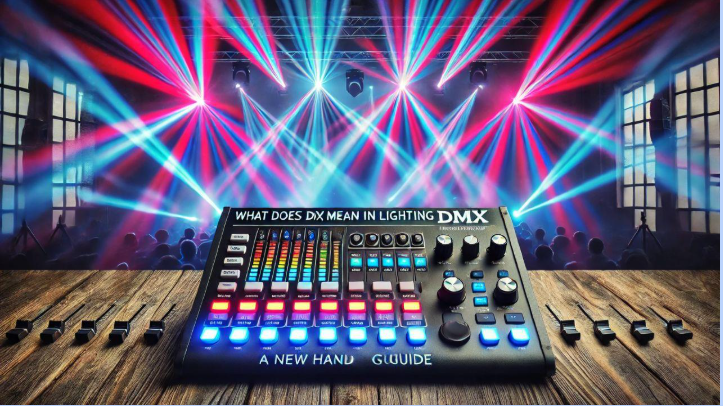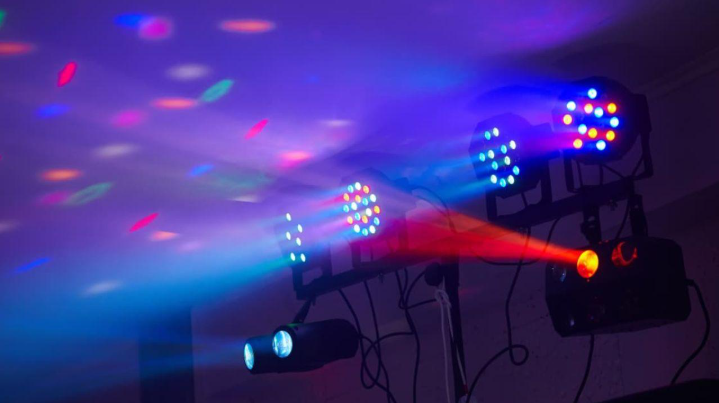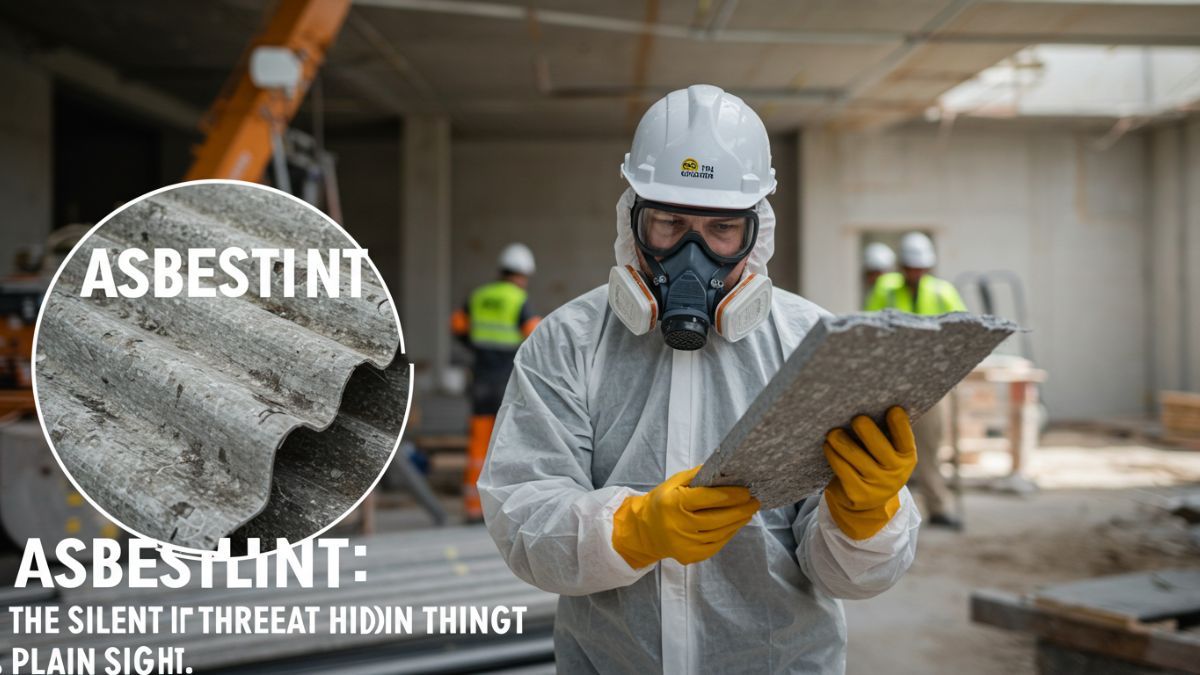GENERAL
DMX and LED Lighting: Understanding Digital Multiplex Control and Its Impact

The DMX system represents one of the most advanced lighting control technologies, and it has become the primary standard for contemporary applications. DMX represents a common term found in LED lighting discussions yet remains unclear to people who lack understanding of its technology definition and operational principles. An led tape light dmx system allows precise control over brightness, color, and effects, making it ideal for dynamic lighting displays. The standardized protocol DMX stands for Digital Multiplex, which controls lighting effects across stage productions, architectural lighting applications, commercial displays, and home automation systems. DMX operates as a crucial modern lighting system component because it allows users to control numerous fixtures simultaneously with both precision and flexible control.

The Origin and Development of DMX
In 1986, USITT established the DMX512 protocol to solve problems that plagued earlier lighting control systems. The adoption of DMX introduced a new era in lighting control systems because analog signals previously used extensive wiring and produced unreliable results. The installation of lighting fixtures became complicated because each fixture required its own specific control line.
DMX introduced a digital communication system enabling controllers to control multiple fixtures through one unified data cable. Standardization of lighting systems through DMX led to simplified setup processes and enhanced reliability along with extended programming potential. The development of DMX technology has extended its original theater-based usage to become an essential control system for numerous industries that need precise lighting management.
How DMX Works in LED Lighting
The digital protocol DMX functions as a communication system that directs controllers to send signals that control lighting fixtures for intensity levels, color selection, and movement patterns. The standard setup for DMX includes a controller unit and DMX-enabled fixtures, which are linked through data cables to exchange instructions. The protocol manages communication through a step-by-step packet system that controls the various functions of connected fixtures.
The standard DMX system works through 512 channels, which enables the control of 512 separate parameters across each universe. Each lighting device receives data from its assigned address within the universe and understands its intended instructions but ignores data meant for other fixtures. The structured design allows designers to build intricate lighting setups because every fixture executes commands exactly as programmed.
LED lighting benefits from DMX control through its ability to provide users with extraordinary control over brightness settings, color temperature adjustments, and dynamic effects operation. The RGB and RGBW LED strips obtain their wide color range, and fluid lighting transitions through DMX signal control. DMX proves most suitable for applications needing automated and coordinated lighting displays because it allows users to synchronize various lights and effects.
Benefits of LED Lighting Systems
The main benefit of using DMX control for LED lighting systems is its ability to deliver exact and customizable control over numerous fixtures. With DMX, users can easily program their lighting sequences and automate transitions between effects because this system eliminates the need for manual adjustments. Stage productions greatly benefit from this advanced control function since it ensures perfect synchronization between lighting effects, musical performances, and stage effects.
DMX implements dimming and scheduling features that improve energy efficiency. The DMX compatibility of LED fixtures enables programmers to set intensity levels that manage power usage while preserving appropriate lighting conditions. The architectural lighting industry uses this capability to program building and monument illumination following specific patterns and event schedules.
DMX provides scalable operations, which is a significant advantage. The DMX protocol enables users to control either small LED fixture collections or extensive venue-wide lighting networks through a system that provides easy integration and growth capabilities. The DMX protocol enables control of numerous lighting parameters through multiple universes, which makes it suitable for large productions, concert events, and commercial installations.

DMX Applications Beyond Entertainment
The entertainment industry created DMX, but today, it serves purposes that exceed live performance illumination. Building facades, bridges, and landmarks get dynamic color-changing effects through architectural lighting designers who employ DMX technology. The implementation of DMX-controlled LED fixtures in urban environments enables cities to generate spectacular nighttime scenes, which simultaneously improve their public areas and attract tourists.
Retail businesses utilize DMX-controlled lighting because adjustable schemes through DMX enable behavior modification among customers while making their displays more noticeable. DMX controls allow stores to set ambiance lighting and create highlight effects that both improve customer shopping experiences and spotlight particular merchandise. DMX controls the lighting systems of restaurants and hotels alongside event venues to help them build distinctive settings that match their brand personality.
Modern residential smart home automation systems now use DMX-compatible LED lights to enable homeowners to customize their lighting environments. The sophistication of residential lighting has increased through DMX technology, which enables users to modify living space illumination and match outdoor lights with music or seasonal elements.
Understanding DMX Addressing and Configuration
Novice users of DMX need to learn how to properly address and configure their lighting fixtures on a DMX network. Every DMX-compatible light needs a starting address to specify the data stream section it will process. The proper planning of addressing becomes essential because fixture types need multiple channels to handle brightness, color, and movement controls while ensuring no address conflicts occur.
Real-time updates of all connected fixtures occur through the continuous data stream from a DMX controller system. Programmers who work with DMX-controlled LED lighting systems benefit from interfaces between software controllers and hardware consoles that enable user modifications and preset storage along with automated sequence control. Applications that need dynamic lighting effects, such as stage shows and multimedia installations, depend heavily on this flexible system.
Conclusion
The Digital Multiplex system (DMX) transformed LED lighting control through its ability to deliver precise control and flexible operation in multiple industries. DMX started its life in theater staging before spreading across architectural spaces and commercial buildings and finally reaching residential areas. The tool provides essential capabilities to manage various fixtures alongside dynamic effect generation and smart lighting integration for designers and lighting professionals. DMX technology will advance alongside technological progress through the implementation of wireless capabilities, IoT integration, and novel lighting effects. DMX-controlled LED lighting stands as a versatile tool for creating mesmerizing visual effects since it can light up stages at concerts or improve building exteriors and retail environments.
GENERAL
A Step-by-Step Guide to Buying a Canadian Franchise

Franchise ownership has become an increasingly popular way for Canadians to enter the world of entrepreneurship. With a franchise, you gain access to an established brand, proven systems, and ongoing support—all while maintaining the independence of running your own business. Whether you’re transitioning from a corporate career or seeking a new opportunity, investing in a Canadian franchise can be a strategic and rewarding decision. However, navigating the process requires careful planning, research, and due diligence. This guide outlines the essential steps to help you successfully purchase and operate a franchise in Canada.
Step One: Assess Your Goals and Budget
Before diving into the franchise market to buy a franchise, take time to assess your personal and professional goals. Consider why you want to own a franchise, what industries interest you, and how much time and capital you’re willing to invest. Franchises vary widely in cost and operational demands, so understanding your financial situation and long-term objectives is essential. Whether you’re looking for a full-time commitment or a semi-absentee model, clarity in your intentions will help guide your choices.
Step Two: Research Franchise Opportunities
Canada’s franchise industry spans sectors such as food service, retail, fitness, education, home services, and more. Research potential franchises by reviewing their brand reputation, market demand, and growth history. Pay close attention to the support offered by the franchisor, including training, marketing, and operational systems. Resources like the Canadian Franchise Association (CFA) can help you identify credible franchises and provide valuable educational tools for prospective franchisees.
Step Three: Review the Franchise Disclosure Document
Once you’ve identified a franchise of interest, request and review the Franchise Disclosure Document (FDD). In Canada, franchisors are legally required to provide this document at least 14 days before any agreement is signed or payment is made. The FDD contains critical information about the franchise system, financial obligations, franchisee expectations, litigation history, and other disclosures. Carefully reading this document will help you understand the risks and obligations before proceeding.
Step Four: Speak with Existing Franchisees
Connecting with current franchisees is one of the most informative steps in the process. These individuals can offer insights into daily operations, profitability, challenges, and their overall experience with the franchisor. Ask direct questions about training, support, customer experience, and how closely the franchisor meets its commitments. Their feedback will give you a realistic view of what to expect as a franchise owner.
Step Five: Seek Legal and Financial Advice
Before signing any franchise agreement, consult with a lawyer who specializes in Canadian franchise law. A qualified attorney will help you understand the legal terms and protect your interests. Likewise, a financial advisor or accountant can assist you in evaluating the franchise’s earnings potential and ensure you have the capital structure to support your business in its early stages.
Taking the Leap With Confidence
Buying a Canadian franchise is a significant decision, but it can be a smooth and successful journey with the right approach. By following a structured process—from self-assessment and research to legal review and financial planning—you increase your chances of long-term success. A franchise can provide the foundation for a fulfilling career in business ownership, offering both the freedom of entrepreneurship and the strength of a proven system. With preparation and informed decision-making, you’ll be well on your way to becoming a successful franchisee in Canada.
GENERAL
Asbestlint: The Silent Threat Hiding in Plain Sight

In an era where environmental health and safety are top priorities, it’s important to understand all potential hazards around us. One such danger, often overlooked, is asbestlint. This elusive substance poses serious health risks, especially in older buildings. Despite its relatively low public awareness, asbestlint is a problem that demands attention. In this article, we’ll uncover what asbestlints is, how it forms, the dangers it presents, and how to protect yourself from exposure.
What Is Asbestlint?
Asbestlint refers to tiny, airborne fibers that originate from deteriorating asbestos-based materials. These microscopic lint-like fibers are invisible to the naked eye and can linger in the air for hours or even days. When inhaled, they can penetrate deep into the lungs, causing long-term health issues. Asbestlints is especially common in older homes, offices, and industrial structures where asbestos was widely used for insulation and fireproofing.
The Origins of Asbestlints in Construction
During the 20th century, asbestos was hailed as a miracle material due to its strength, heat resistance, and affordability. It was commonly used in:
-
Wall and ceiling insulation
-
Floor tiles
-
Roofing materials
-
Pipe insulation
-
Spray-on fireproofing compounds
As these materials age or are disturbed—such as during renovations—they release asbestlint into the air. Unlike intact asbestos sheets or tiles, asbestlints is more dangerous because it’s easily inhaled without immediate notice.
Health Hazards Linked to Asbestlint Exposure
Exposure to asbestlint is not something to be taken lightly. The body cannot easily expel these tiny fibers, which leads to a buildup in the lungs and surrounding tissues. The most common illnesses associated with long-term exposure include:
1. Asbestosis
A chronic lung condition that results in scarring of lung tissue. It causes shortness of breath and can worsen over time.
2. Mesothelioma
A rare and aggressive cancer that affects the lining of the lungs, chest, or abdomen. It has a strong link to asbestos and asbestlints exposure.
3. Lung Cancer
Individuals exposed to asbestlint over long periods—especially smokers—are at a significantly higher risk of developing lung cancer.
Even a single incident of high exposure can lead to long-term effects, highlighting the importance of vigilance and safety.
Where You Might Encounter Asbestlint
You don’t need to work in construction to be at risk. Asbestlint can be present in:
-
Pre-1980s homes during remodeling
-
Public schools and universities built decades ago
-
Industrial sites with aging infrastructure
-
Military buildings and navy ships
Any property with asbestos-containing materials that have become brittle or damaged is a potential source of asbestlints. Even daily wear and tear like drilling into walls or replacing old pipes can disturb these materials.
How to Identify Asbestlint in Your Environment
Detecting asbestlint isn’t easy because it cannot be seen or smelled. However, if you live or work in a building constructed before the 1980s, it’s wise to assume asbestos may be present. Here’s how you can approach the problem:
Professional Inspection
Only certified professionals can test for asbestlints and asbestos-containing materials using specialized equipment.
Air Quality Testing
If you suspect lingering fibers, indoor air testing is the best way to determine if asbestlints is present.
Avoid Disturbing Old Materials
If you see crumbling ceiling tiles, worn insulation, or damaged floorboards, avoid touching them and call an expert.
Safe Management and Removal of Asbestlint
Hire Licensed Abatement Experts
Never attempt to clean or remove asbestlint yourself. Asbestos abatement requires sealing off the contaminated area, using negative air pressure systems, and wearing full-body protective suits.
Follow Legal Guidelines
Most countries have strict laws governing the removal and disposal of asbestos and asbestlints. Violating these can lead to heavy penalties and serious health consequences.
Use HEPA Filters
If you’re waiting for professional help, running HEPA air purifiers can help minimize airborne fibers temporarily.
Preventing Future Exposure to Asbestlint
One of the best ways to avoid the dangers of asbestslint is by choosing modern, safe alternatives in construction and renovation:
-
Fiberglass insulation – safe, effective, and widely available
-
Mineral wool – fire-resistant and non-toxic
-
Recycled cellulose – environmentally friendly insulation material
-
Non-asbestos cement boards – modern boards that offer the same performance without the risk
Whenever you’re upgrading a home or commercial space, always ask whether the materials are free of asbestos and asbestlint-producing compounds.
Environmental and Legal Considerations
Asbestlint is not only a health risk but an environmental pollutant. Improper disposal can contaminate soil and water sources. Governments have placed strict controls on how asbestos waste is transported and stored:
-
Use sealed containers for disposal
-
Label clearly as hazardous waste
-
Transport only through certified handlers
Being aware of these laws protects not only your health but the environment around you.
Public Awareness and Safety Campaigns
Increasingly, organizations and governments are launching campaigns to raise awareness of asbestlints and asbestos-related dangers. Educational materials, community workshops, and online tools now help the public identify risks and act responsibly.
Some recommended actions include:
-
Attending local safety seminars
-
Reading official health department guidelines
-
Scheduling annual home inspections in older properties
Final Thoughts: Why Asbestlint Awareness Matters
Though often overshadowed by more visible hazards, asbestlint represents a very real threat. Its invisible nature and long-term health impacts make it particularly insidious. With proper knowledge, proactive inspection, and responsible renovation practices, exposure to asbestlints can be significantly reduced or even eliminated. Whether you’re a homeowner, contractor, or building manager, staying informed is your best defense against this hidden danger.
GENERAL
What is .ydesi? A Digital Identity Rooted in Culture and Connection

In the fast-evolving world of the internet, cultural identity is becoming a powerful tool for personal and professional branding. One such modern identifier that has quietly made its mark is .ydesi. Though it may seem like just another digital tag, .ydesi holds deeper meaning for many who identify with South Asian roots and are looking for authentic representation online.
This article dives into the concept of .ydesis, exploring how it’s used, why it’s growing in popularity, and what it means for digital identity in today’s connected world.
Introduction to .ydesi: A Cultural Marker in the Digital World
The term .ydesi is not an official domain extension like “.com” or “.org.” Instead, it’s a stylized suffix often used in usernames, social media handles, or content branding to highlight a South Asian connection. The word “desi” itself is a colloquial term for people from the Indian subcontinent, including India, Pakistan, Bangladesh, Sri Lanka, and Nepal.
When people use .ydesis, they are signaling their ethnic background, cultural pride, and desire to create or join communities that understand and celebrate South Asian heritage.
Why .ydesi Matters in Today’s Digital Age
In a world filled with digital noise, authenticity stands out. The use of .ydesi offers a clear and creative way to represent South Asian identity online. It allows individuals and brands to do the following:
-
Celebrate their heritage openly.
-
Build niche communities around shared experiences.
-
Attract an audience that connects with their cultural message.
For the diaspora, especially second-generation South Asians living abroad, .ydesis serves as a bridge between modern identity and ancestral roots.
Common Uses of .ydesi in Online Spaces
1. Social Media Profiles
From Instagram influencers to Twitter users, people are adding .ydesi to their handles to highlight their background. It’s especially common in niches like cooking, fashion, comedy, and lifestyle.
Example:
-
@style.ydesi – A fashion page featuring traditional and fusion outfits.
-
@foodie.ydesi – A recipe page sharing South Asian cuisine.
2. YouTube Channels and Blogs
Creators are using .ydesis as a branding element in their channel or blog names. It immediately signals to viewers what kind of content to expect.
3. Online Businesses and Startups
Small businesses targeting South Asian audiences may incorporate .ydesi into their branding to build trust and cultural familiarity.
Cultural Significance Behind the .ydesi Tag
The dot before “ydesi” mimics the format of domain names, giving it a sleek, tech-forward look. At the same time, it allows users to reclaim and reshape how their identity is presented online.
Unlike generic names, .ydesis instantly communicates culture, community, and context. It resonates with:
-
Young South Asians navigating dual identities.
-
Entrepreneurs wanting to highlight ethnic authenticity.
-
Artists who draw inspiration from their roots.
The Growth of the .ydesi Movement
Over the past few years, the adoption of identity-based tags like .ydesi has been part of a larger trend. As people seek more personalized, community-driven online spaces, these identifiers become more than just names—they become brands.
Community hashtags like #ydesifashion, #ydesifood, and #ydesilife are appearing across platforms like TikTok and Instagram, allowing users to connect with similar voices worldwide.
Advantages of Using .ydesi in Your Online Identity
1. Stronger Brand Recall
Names with .ydesis stand out and are easier to remember for South Asian audiences.
2. Cultural Relevance
It immediately signals cultural connection and builds authenticity.
3. Community Building
Using .ydesis helps create online communities where people feel seen, understood, and supported.
Who Should Consider Using .ydesi?
The .ydesi label isn’t for everyone—but it’s perfect for those who:
-
Identify as South Asian and want to showcase their heritage.
-
Run a business or content channel targeting the South Asian market.
-
Create culturally rich content (food, fashion, art, tech).
Whether you’re an influencer, a startup founder, or a casual content creator, if your work reflects desi culture, .ydesis might be a perfect fit.
Is .ydesi Official? Debunking the Confusion
It’s important to note that .ydesi is not an official domain extension (like .com or .org). Instead, it’s a stylistic choice used mainly in usernames and branding. However, its consistency and popularity have given it legitimacy within many online communities.
With enough traction, there’s potential that .ydesis could eventually become part of a niche domain registry, similar to how .ai or .tv evolved over time.
Real-World Examples of .ydesi in Action
Here are a few fictional examples that showcase how versatile the term can be:
-
code.ydesi – A blog focusing on tech tutorials for South Asian learners.
-
mom.ydesi – A parenting channel sharing cultural traditions, tips, and recipes.
-
biz.ydesi – A podcast interviewing South Asian entrepreneurs.
These examples show how the keyword adapts across various industries while maintaining cultural relevance.
Final Thoughts: The Future of .ydesis Online
As digital platforms become more crowded and identity becomes more central to online presence, tags like .ydesis will only become more valuable. They offer a simple yet powerful way to represent who you are and where you come from.
In a world that is constantly shifting, .ydesi is more than just a label. It is a symbol—a marker of identity, pride, and community in the virtual space. Whether you’re starting a blog, launching a product, or building your personal brand, incorporating .ydesis might just be the authentic touch your presence needs.
-

 GENERAL1 year ago
GENERAL1 year agoDiscovering the Artistic Brilliance of Derpixon: A Deep Dive into their Animation and Illustration
-

 Posts2 years ago
Posts2 years agoSiegel, Cooper & Co.
-

 FASHION2 years ago
FASHION2 years agoThe Many Faces of “λιβαισ”: A Comprehensive Guide to its Symbolism in Different Cultures
-

 Lifestyle2 years ago
Lifestyle2 years agoPurenudism.com: Unveiling the Beauty of Naturist Lifestyle
-

 Lifestyle2 years ago
Lifestyle2 years agoBaddieHub: Unleashing Confidence and Style in the Ultimate Gathering Spot for the Baddie Lifestyle
-

 HEALTH1 year ago
HEALTH1 year agoTransformative Health Solutions: Unveiling the Breakthroughs of 10x Health
-

 Entertainment2 years ago
Entertainment2 years agoGeekzilla Podcast: Navigating the World of Pop Culture, Gaming, and Tech
-

 Lifestyle11 months ago
Lifestyle11 months agoSandra orlow: Unraveling the Story of an Iconic Figure
